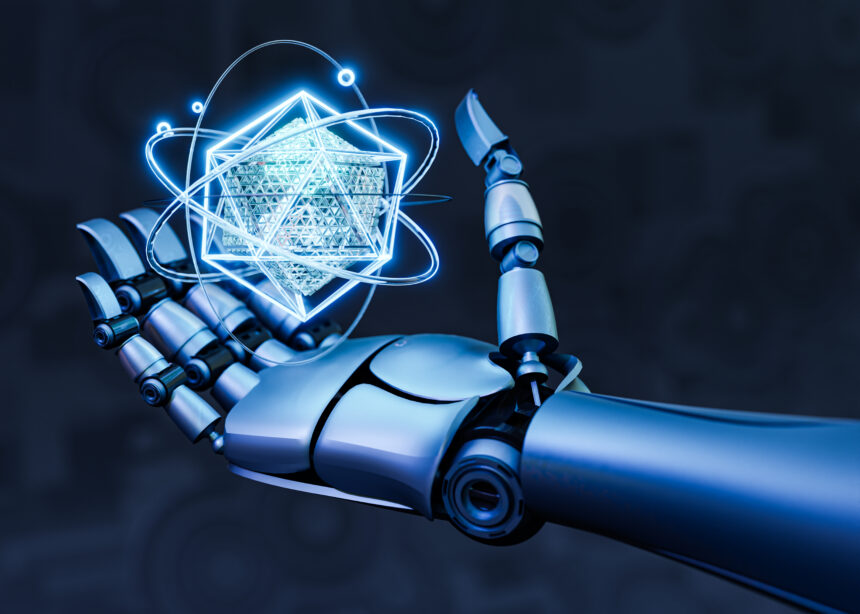In the ever-evolving digital world, artificial intelligence (AI) is rapidly becoming a central component of cybersecurity. From automating threat detection to enhancing system response times, AI is reshaping how organizations protect their digital assets. However, as with any powerful tool, AI also presents new risks. Just as defenders use AI to identify and neutralize threats, cybercriminals are also leveraging this technology to launch more sophisticated and damaging attacks.
This dual nature makes AI in cybersecurity a complex and critical topic for organizations, governments, and individuals alike. While the technology brings undeniable benefits, its potential for misuse underscores the need for thoughtful implementation, regulation, and ongoing innovation.
The Role of AI in Strengthening Cybersecurity Defenses
AI has revolutionized the cybersecurity landscape by automating threat detection, reducing response times, and providing predictive analytics. Machine learning algorithms can analyze vast datasets in real-time, identifying patterns and anomalies that might indicate a security breach. This enables quicker and more accurate responses to potential threats.
For example, AI-powered security systems can detect unusual login behaviors, unauthorized data access, or network traffic that deviates from established norms. These early warning systems allow organizations to act before damage occurs, minimizing the impact of cyberattacks. Furthermore, AI can prioritize security alerts, helping human analysts focus on the most pressing threats.
Predictive Capabilities and Proactive Defense
One of the most powerful aspects of AI in cybersecurity is its ability to predict potential threats before they happen. By analyzing historical attack data, AI systems can anticipate attack vectors and identify vulnerable points within a network. This allows IT teams to proactively reinforce security measures and close gaps before attackers can exploit them.
AI can also simulate potential attack scenarios, enabling organizations to test the resilience of their cybersecurity infrastructure. These predictive models not only enhance preparedness but also contribute to a stronger overall defense posture.
The Dark Side: AI as a Tool for Cybercriminals
While AI offers remarkable advantages for cybersecurity defense, it also provides new capabilities for malicious actors. Cybercriminals are now using AI to automate attacks, making them faster and more difficult to detect. AI-driven malware can adapt its behavior in real-time, bypassing traditional antivirus software and intrusion detection systems.
AI can also be used to craft more convincing phishing attacks by mimicking human writing styles and personalizing messages based on harvested data. As a result, users are more likely to fall for scams, compromising sensitive information and corporate networks.
AI-Powered Social Engineering and Deepfakes
In recent years, cybercriminals have increasingly turned to AI-generated deepfakes and voice synthesis to execute social engineering attacks. These tools can impersonate executives, manipulate audio and video content, and deceive employees into taking harmful actions.
The realism and sophistication of these AI-generated forgeries make it incredibly challenging for individuals to distinguish between real and fake communication. This growing threat emphasizes the need for AI-driven tools that can detect deepfakes and verify the authenticity of digital content.
Balancing Automation with Human Oversight
Although AI excels in processing large volumes of data and identifying threats at speed, it cannot entirely replace human cybersecurity professionals. Critical thinking, ethical judgment, and contextual understanding are essential elements of effective cybersecurity that AI currently lacks.
Human analysts play a vital role in interpreting AI-generated insights, making informed decisions, and responding to complex threats. The most effective cybersecurity strategies combine the speed and accuracy of AI with the intuition and experience of human experts.
AI in Threat Hunting and Incident Response
Threat hunting involves proactively searching for hidden threats within a network before they cause harm. AI enhances this process by scanning logs, user behavior, and endpoint activity for subtle signs of compromise. Machine learning models can uncover threats that traditional security tools might miss.
During incident response, AI assists by automating tasks like log analysis, forensic investigation, and report generation. This allows cybersecurity teams to focus on containment and remediation, reducing the time it takes to recover from an attack.
Ethical Concerns and Regulation of AI in Cybersecurity
As AI becomes more entrenched in cybersecurity, questions around ethics and regulation have come to the forefront. How should AI be governed to prevent misuse? Who is accountable when AI systems make mistakes or are exploited by bad actors?
To address these concerns, governments and industry leaders must collaborate to create standards and guidelines for responsible AI use. This includes transparency in AI decision-making, data privacy protections, and safeguards against algorithmic bias.
The Future of AI in Cybersecurity: Opportunities and Challenges
Looking ahead, AI will continue to shape the future of cybersecurity in both positive and negative ways. Innovations like quantum-resistant algorithms, adaptive AI defenses, and decentralized security models are on the horizon, promising to enhance protection against increasingly sophisticated threats.
However, the arms race between cyber defenders and attackers will also intensify. As AI tools become more accessible, the line between defensive and offensive applications will blur. Organizations must stay ahead by investing in advanced technologies, continuous training, and ethical AI practices.
Training and Workforce Development for AI-Driven Security
To maximize the benefits of AI in cybersecurity, it’s essential to equip the workforce with relevant skills. Cybersecurity professionals must understand how AI works, how to train and interpret models, and how to respond when AI-driven systems flag potential threats.
Educational institutions and training programs are now integrating AI and cybersecurity into their curricula, preparing the next generation of experts. Upskilling existing staff is also crucial, ensuring teams can effectively collaborate with AI tools to enhance organizational security.
Collaborative Defense: Sharing Intelligence Across Organizations
AI’s effectiveness is significantly improved when organizations share threat intelligence. By pooling data on emerging threats and attack patterns, companies can train AI models to detect new exploits more quickly. This collaborative approach builds a more resilient cybersecurity ecosystem.
Industry alliances, government agencies, and cybersecurity vendors are increasingly working together to establish platforms for secure information sharing. These networks accelerate the development of AI defenses and help businesses stay ahead of cyber adversaries.
Conclusion: Navigating the Double-Edged Nature of AI
AI is undeniably transforming cybersecurity, offering unprecedented speed, accuracy, and predictive power in defending against digital threats. At the same time, it introduces new challenges by empowering cybercriminals with equally advanced tools. To navigate this double-edged sword, organizations must adopt a balanced approach—leveraging AI’s strengths while remaining vigilant against its risks.
Through thoughtful implementation, ethical oversight, and a strong human-AI partnership, the cybersecurity community can harness the full potential of AI to build a safer and more secure digital future.











